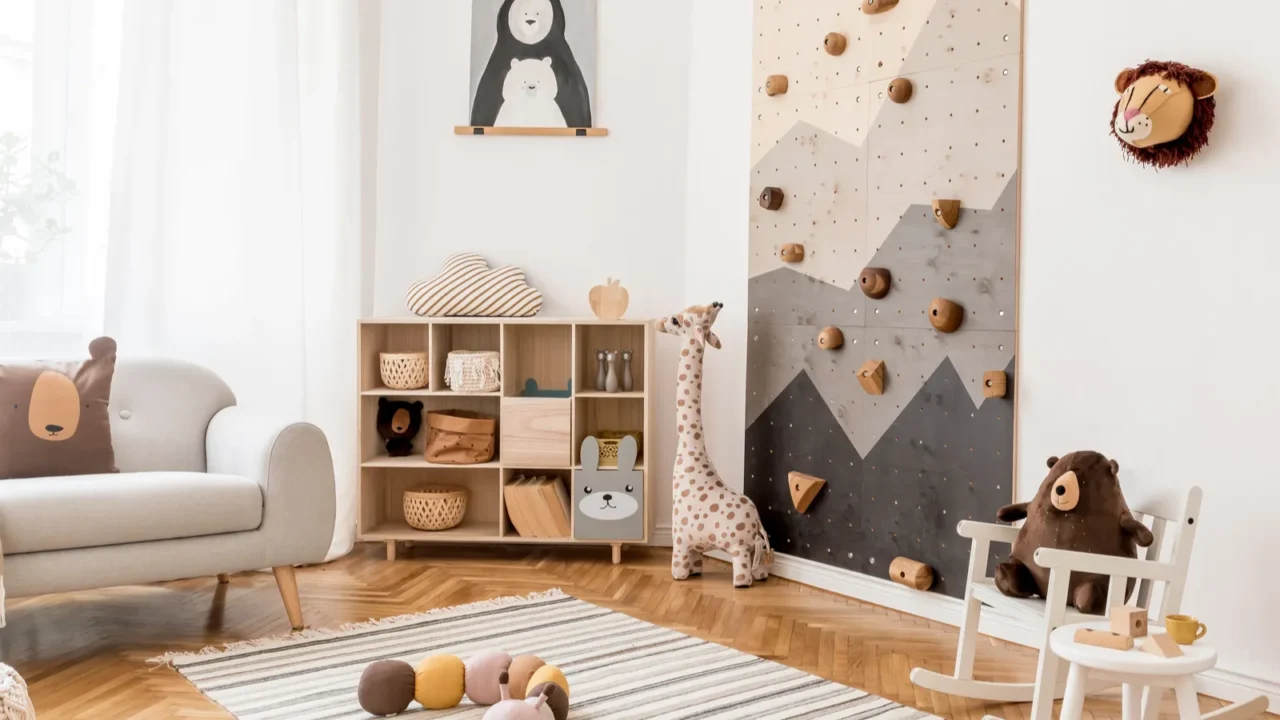
Playroom Design Ideas
Playrooms are often overlooked in homes. Many parents think that just adding colorful furniture will make kids happy, and while they do enjoy it, the real question is: can you comfortably spend hours there with them?
Creating a playroom that appeals to both children and adults is no small feat. However, you can create a space that fosters creativity, development, and family bonding with designer insights and thoughtful design.
Swipe to explore tips to create a space that appeals to both kids and adults.
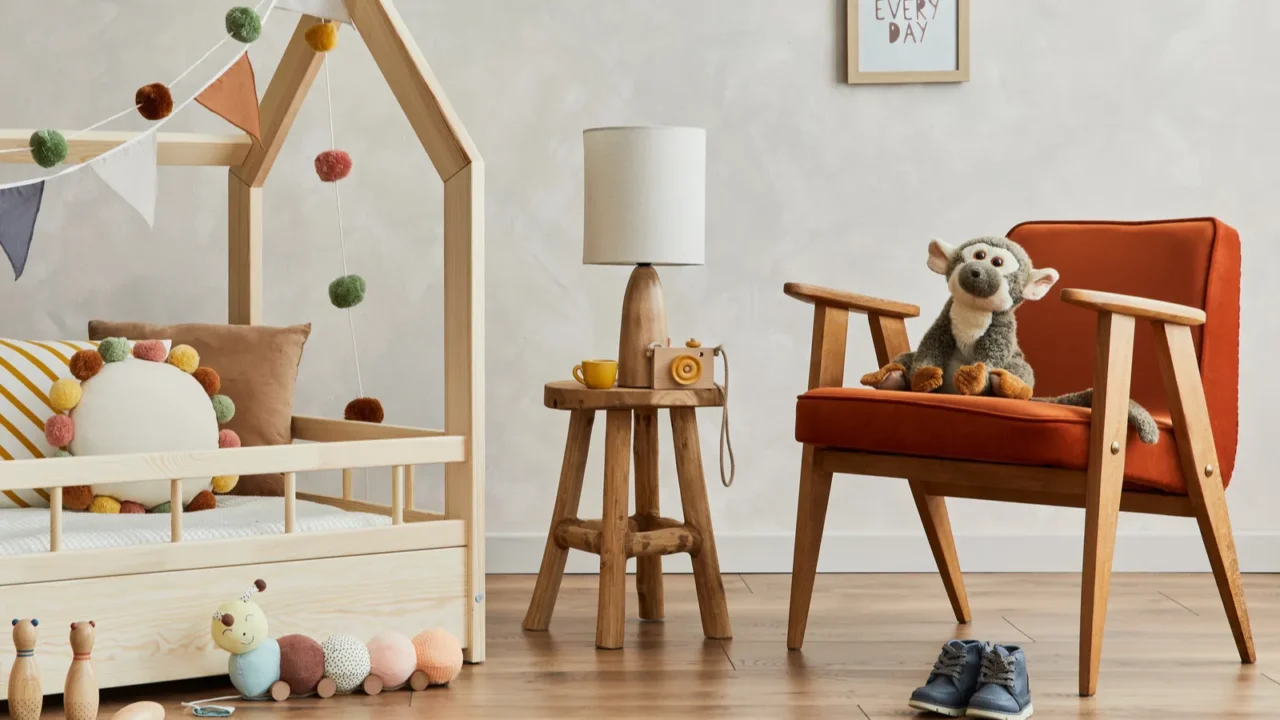
Lighting
There is so much emphasis on having good layered lighting in the home but not much attention is paid to lighting when it comes to designing kids’ rooms by parents.
Children’s spaces (whether a room or play area) need equal attention when it comes to lighting.
Overhead fixtures provide ample brightness for playtime, while table lamps or string lights create a cozy ambiance. Dimmable options let you adjust the mood as needed. Task lighting, such as a desk lamp for the art zone
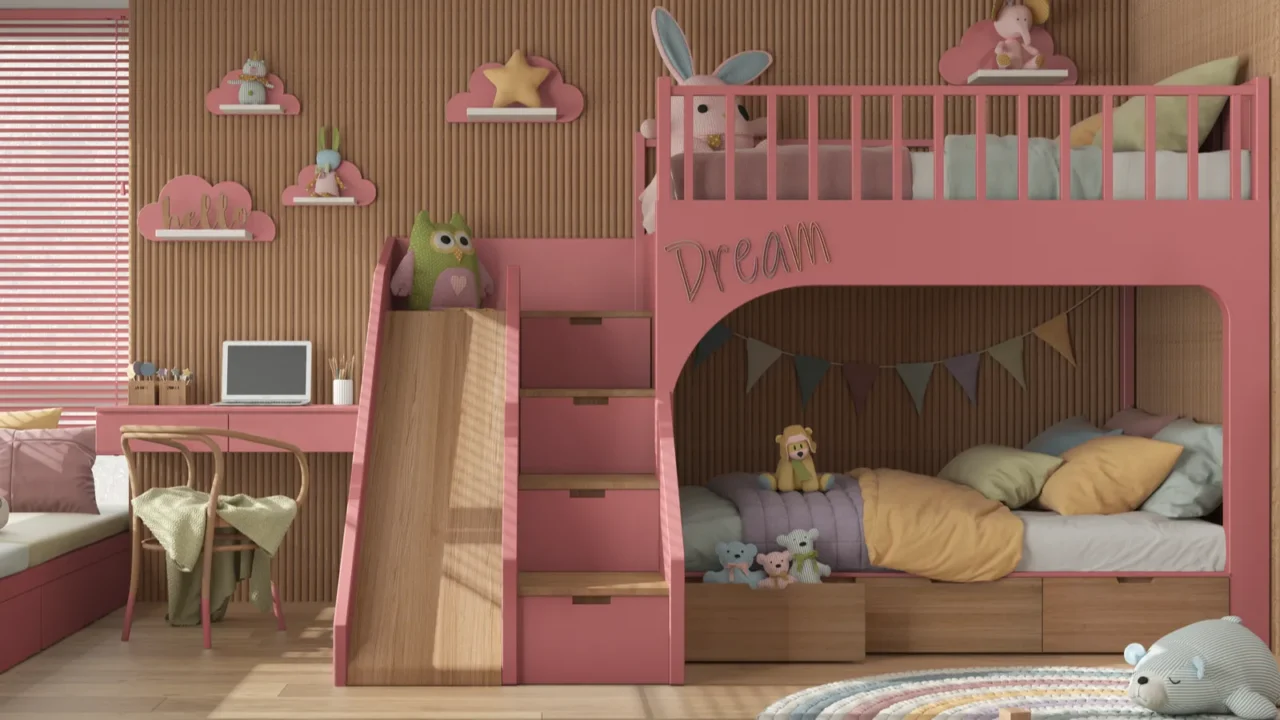
Multifunctional Furniture
Opt for furniture that adapts to the evolving needs of your family. For instance, low-slung sectional sofas or floor cushions provide safe areas for kids to play while being comfortable enough for adults to relax.
Work tables on wheels are an excellent addition. They allow easy rearrangement during playdates or crafting sessions. Such Flexible furniture choices make the space functional for everyone.
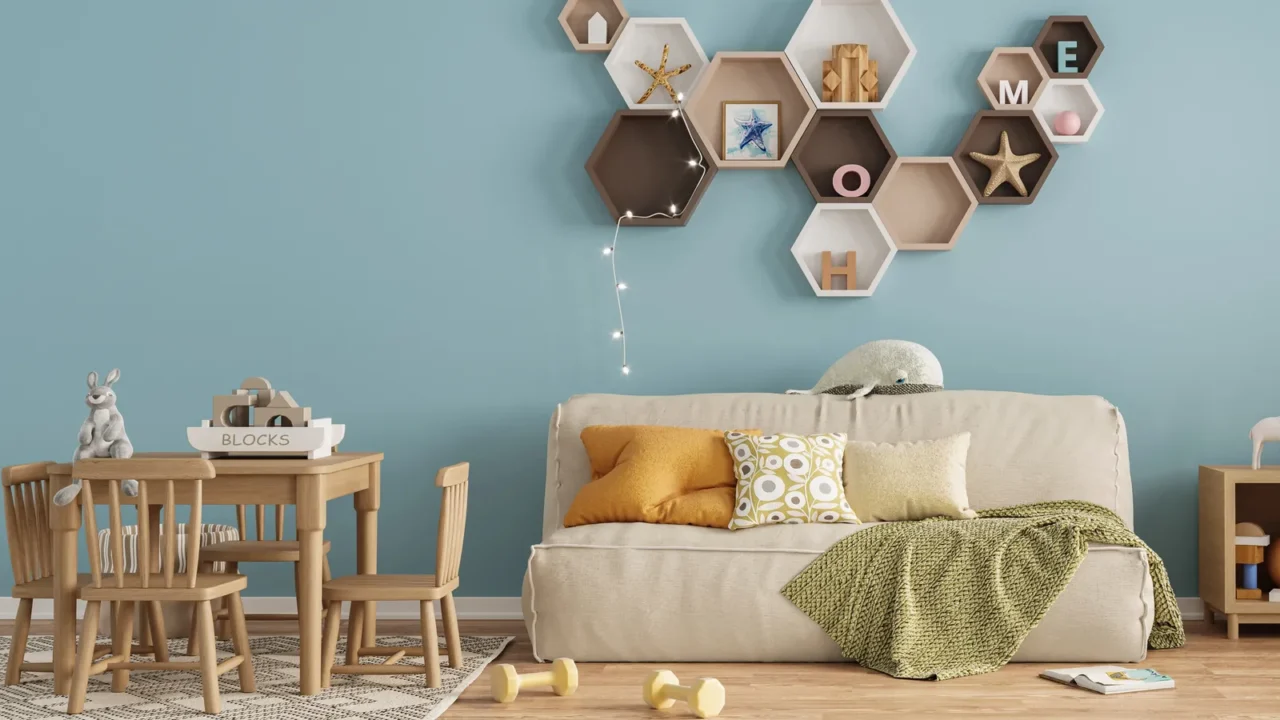
Seating for Play and Relaxation
Little seats in cute animal shapes may look adorable, but are they comfortable enough for your little one (and you) to sit on for hours? Comfortable seating ensures the playroom is enjoyable for everyone.
Bean bags and modular sofas adapt to activities like storytime or family movie nights. Floor cushions and poufs are flexible and kid-friendly.
Create a cozy, functional setup that works for play, relaxation, and everything in between. Furthermore, look for pieces with washable covers for easy maintenance.
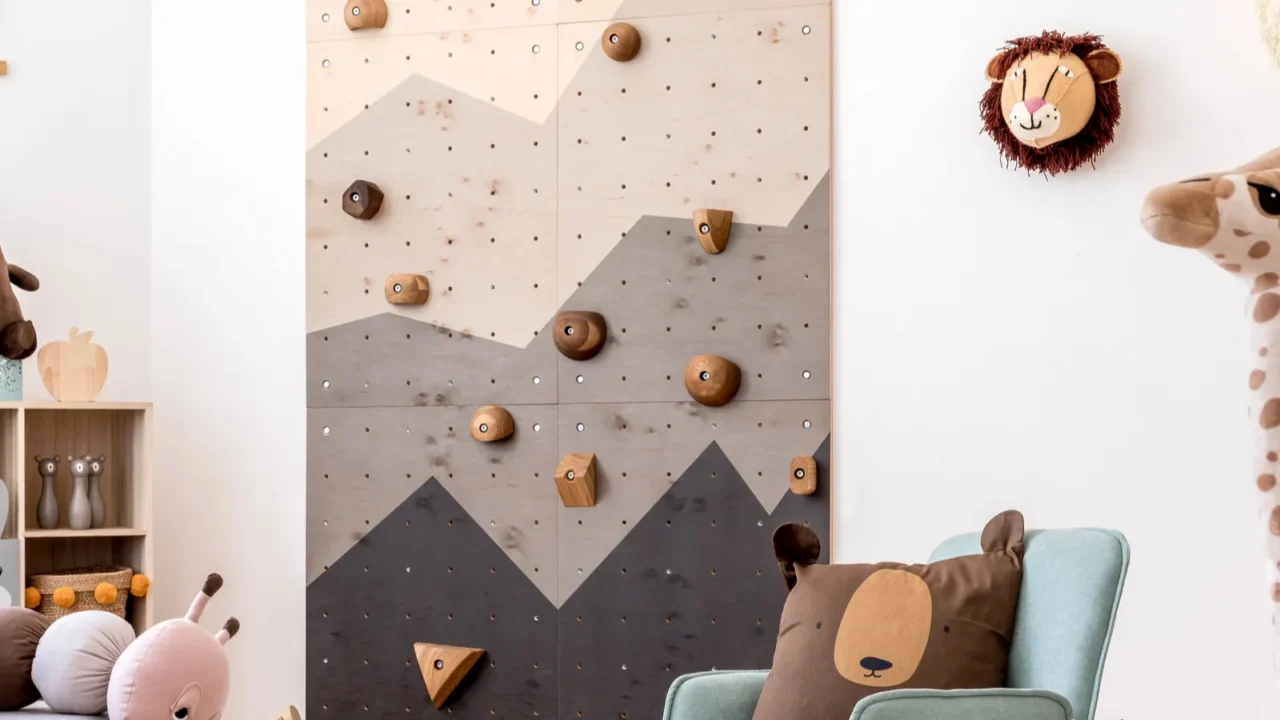
Climbing and Movement Options
If you have the space, you can add features that meet their sensory needs.
They might get tired of a few elements, so go with a circuit such as climbing walls, rope ladder, or indoor slide. Think of elements that add excitement and keep kids moving.
Choose options that fit your space and ensure safety. Lastly, and most importantly, ensure play equipment is securely mounted into a material stronger than drywall.
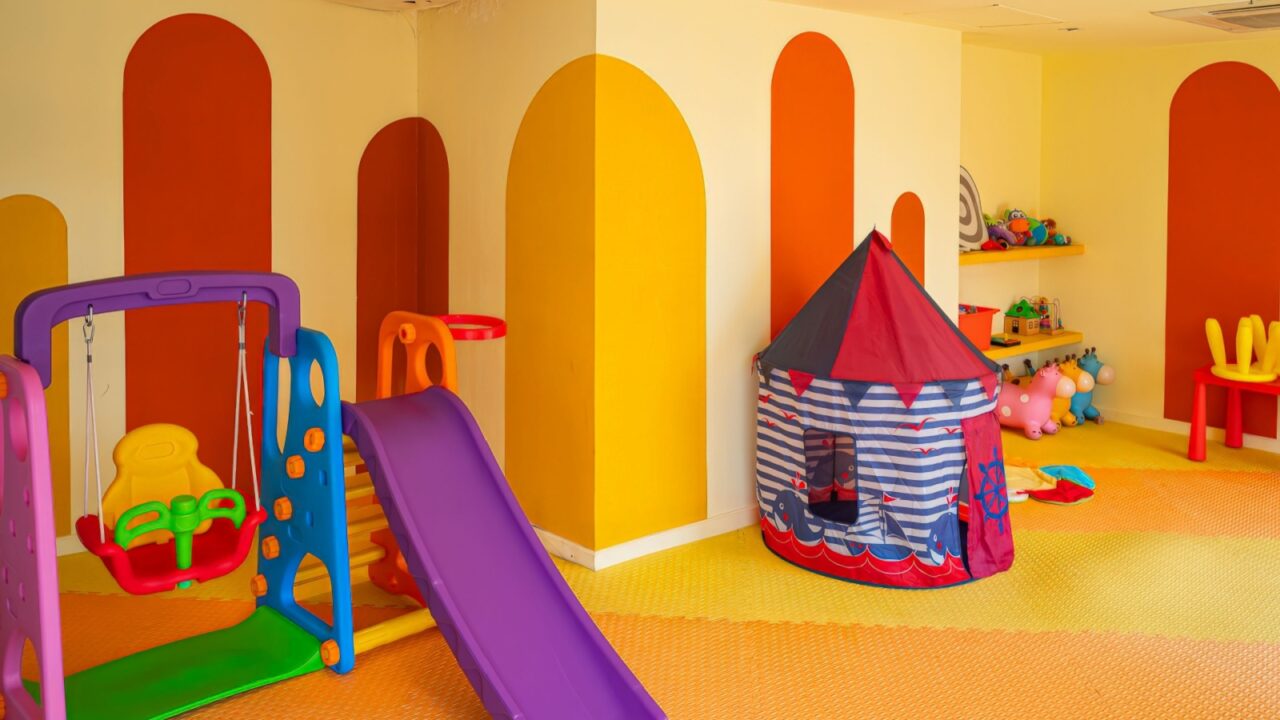
Color and Pattern
Bright, bold colors can influence a child’s mood and creativity. According to a study in Frontiers in Psychology, warm tones like yellow and orange can boost energy, while cooler hues like blue aid concentration.
Additionally, you can use high-quality vinyl or replaceable wallpaper that ensures durability without compromising aesthetics. Best part? You can change wallpaper anytime without much mess.
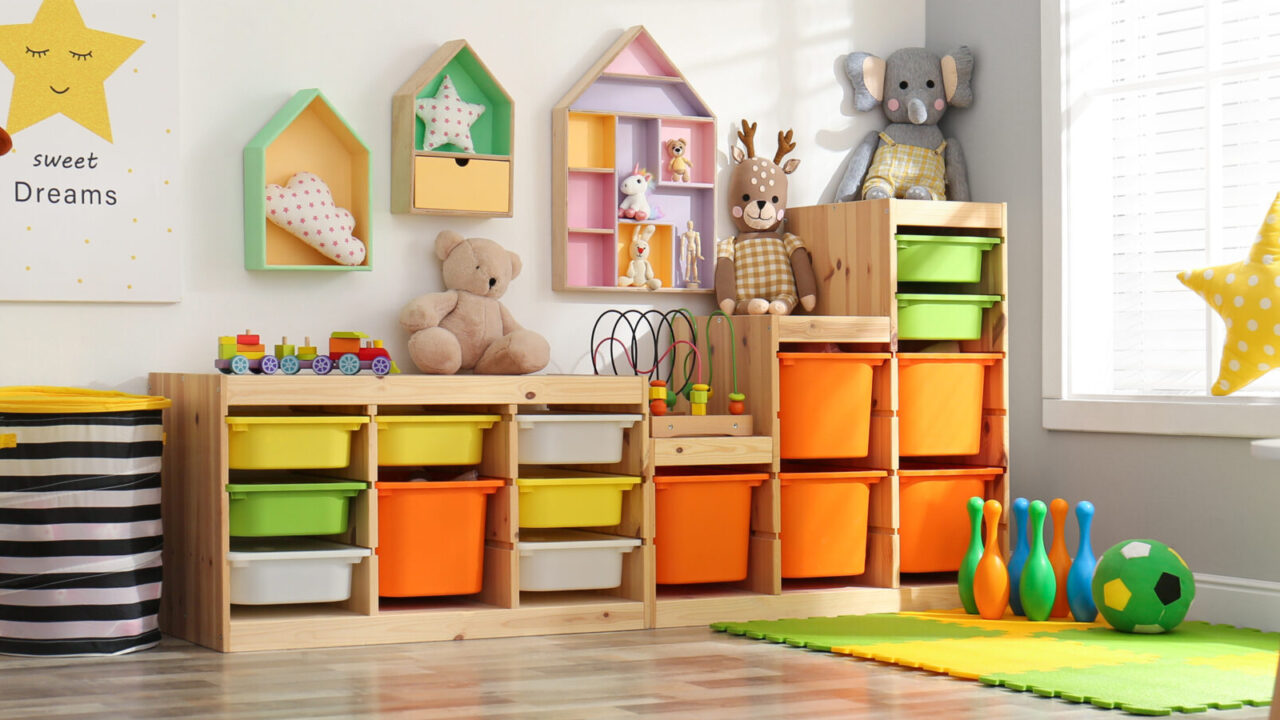
Toy Hub
Create an inviting space for both kids and adults. But with all the clutter kids make, is it possible? Yes, it is. Experts advocate for a “toy hub” system with categorized cubbies and rotating toys.
A well-structured storage reduces overstimulation and teaches kids organizational skills as well. Built-in shelves designed with longevity in mind can transition from toy storage to books or display items as children age.
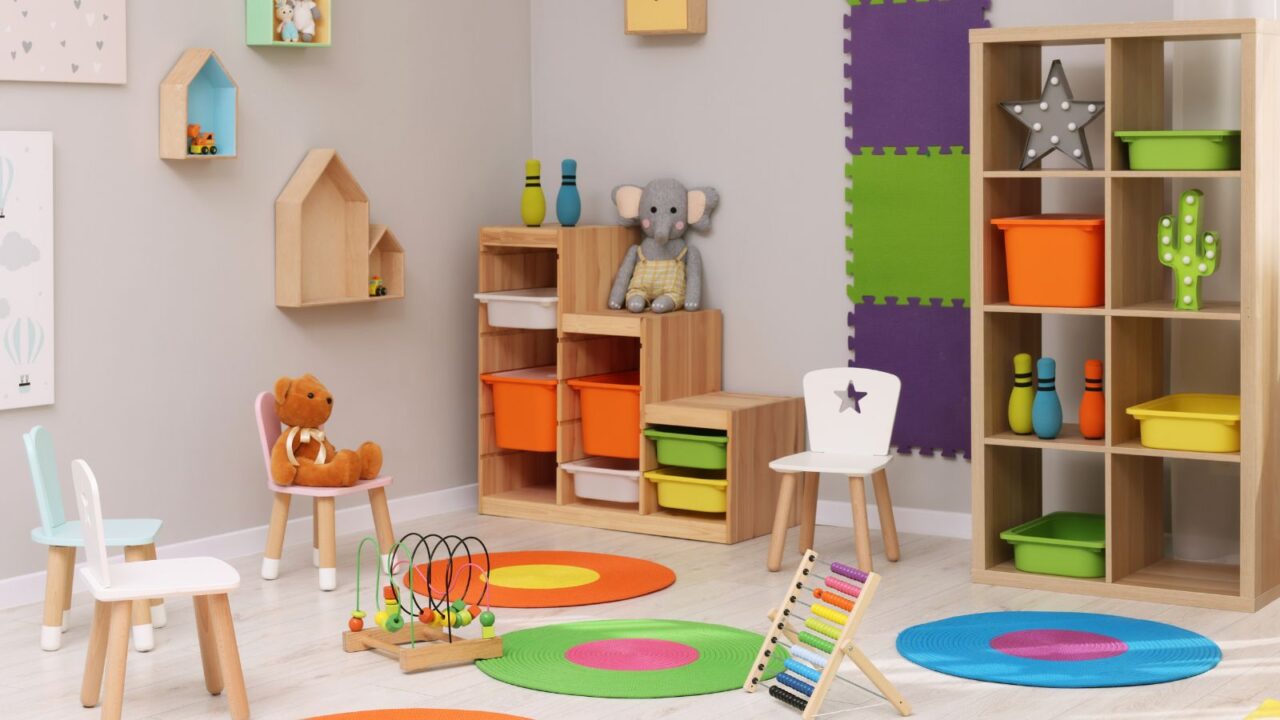
Activity Zones for Variety
One zone for all play from reading to writing to playing? A big no. Divide the playroom into zones for focused activities.
Dedicate areas for art, reading, and active play. Rugs or furniture can help define each space. Set up an art table with supplies, a book nook, and a movement area with climbing toys or mats.
Having activity zones makes the exploration easy without creating any clutter.
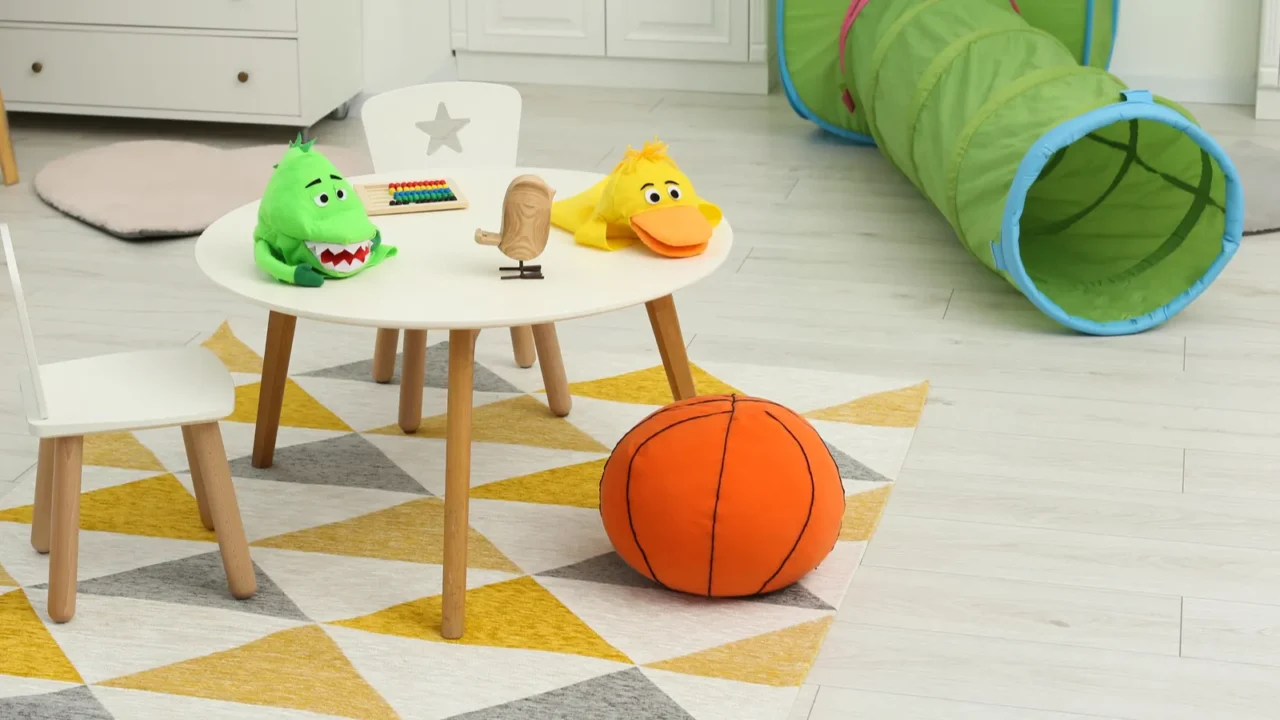
Flooring and Carpets
Playrooms demand durable, easy-to-clean flooring. Go with Luxury vinyl or laminate that can handle wear and tear while offering style.
Further, layer with colorful area rugs or foam mats for a cozy look. Consider carpet tiles because they’re soft, safe, and replaceable if damaged.
Want an interactive touch? Use rugs with playful designs, like roads or hopscotch patterns. Flooring that balances function and fun keeps the playroom safe and visually appealing for all.
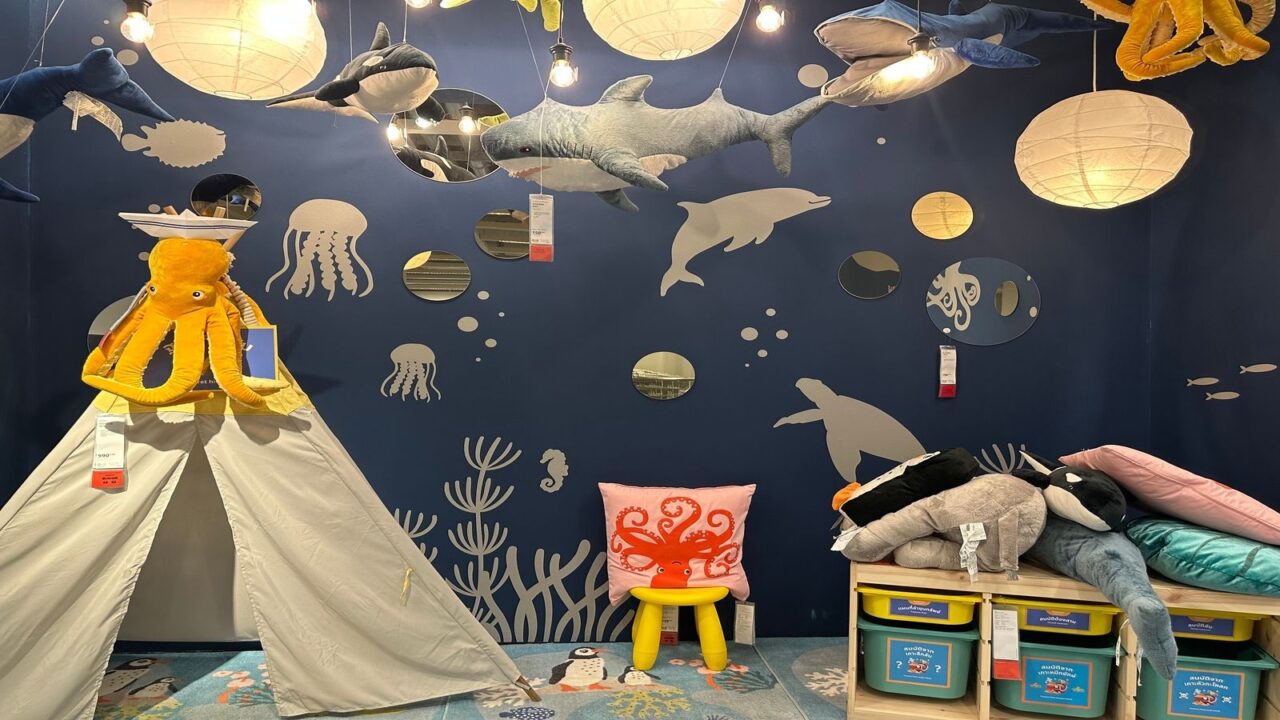
Bold Walls, Big Fun
The playroom is the perfect place to embrace bold design. Try vibrant wallpapers or murals with whimsical themes. Striking colors like teal or mustard yellow can energize the room, while neutral accents keep it grounded.
Wall decals offer an easy way to refresh the space without commitment. Add a chalkboard or whiteboard wall to spark creativity for kids and functionality for adults.
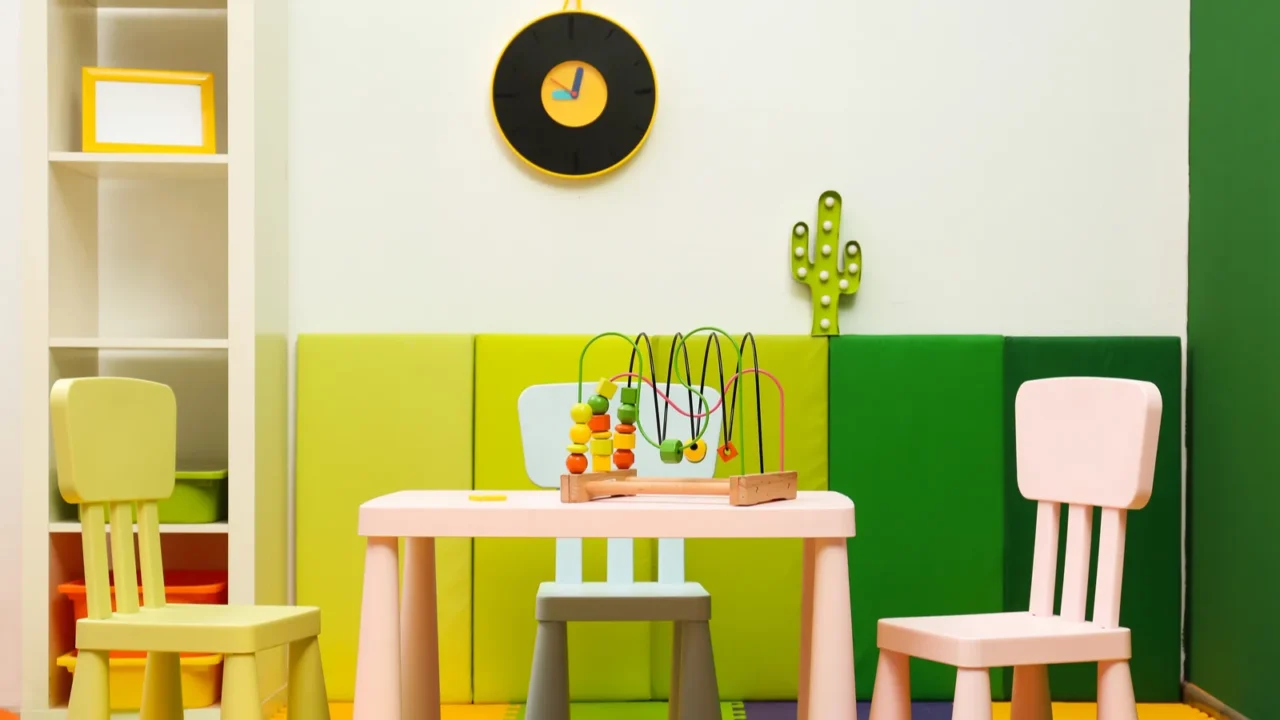
Decor That Inspires Creativity
Think decor is only for the living room, and the kids’ room only needs toys? Then you might need to look from a different angle.
Kid’s rooms need decor elements that spark the imagination. Frame kids’ artwork or create a gallery wall with colorful prints. Open shelving is best for displaying toys and books as both decor and inspiration.
String lights or garlands can be added for a whimsical touch. Choose decor that’s easy to update as kids grow.
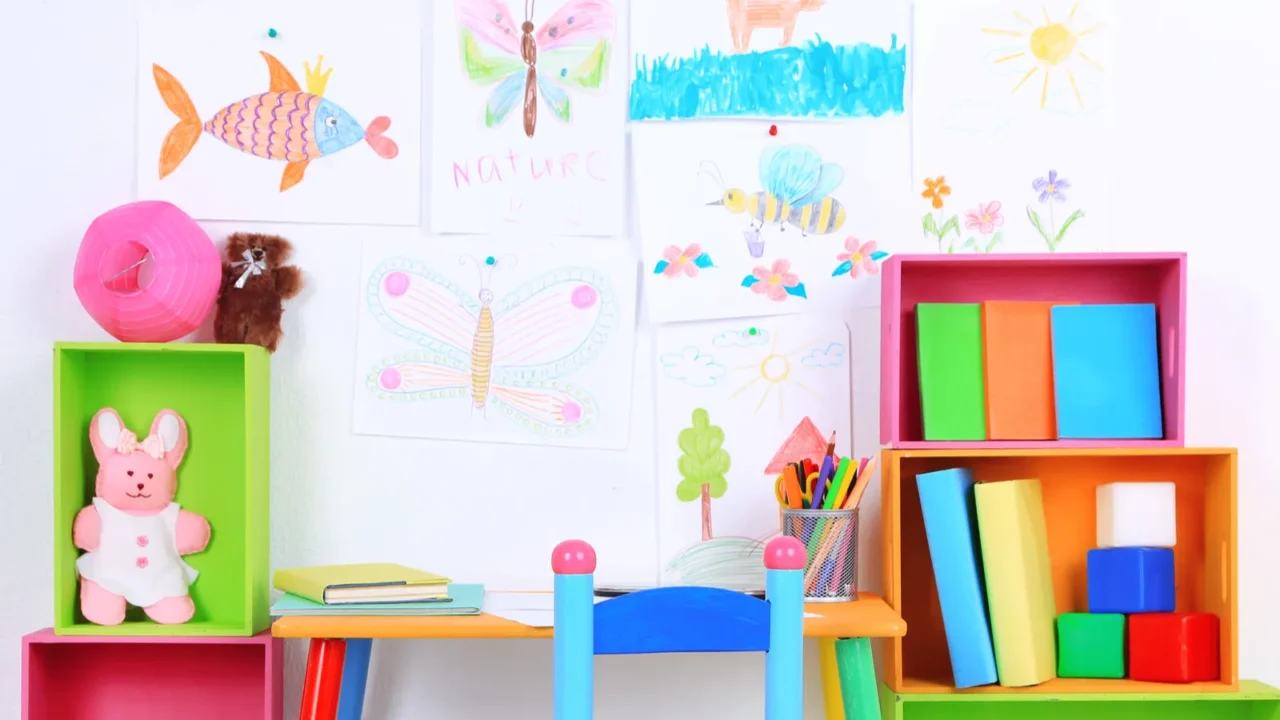
Interactive Walls
Make walls part of the playroom’s charm with interactive features. Chalkboard paint, magnetic boards, or pegboards encourage creativity and organization.
Kids can doodle, display their creations, or organize toys, while adults can use them for notes or stylish decor. Interactive walls bring a dynamic element to the room, making it functional and fun for everyone.
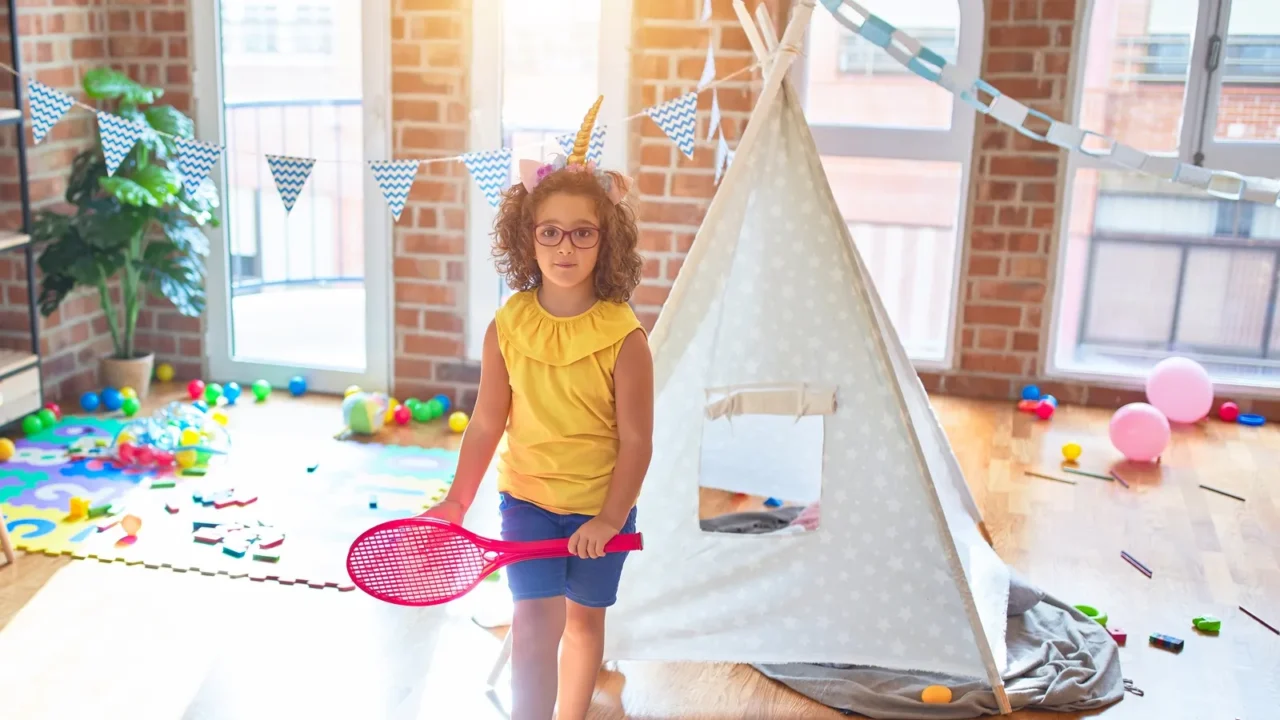
Natural Light and Window Features
Natural light can transform a playroom for both kids and adults. Large windows not only brighten up the space but also connect the playroom to the outdoors which ultimately adds a sense of openness.
Go with big windows and opt for sheer curtains or blinds to filter light and reduce glare during playtime. To enhance functionality, create a window seating nook with built-in storage underneath.
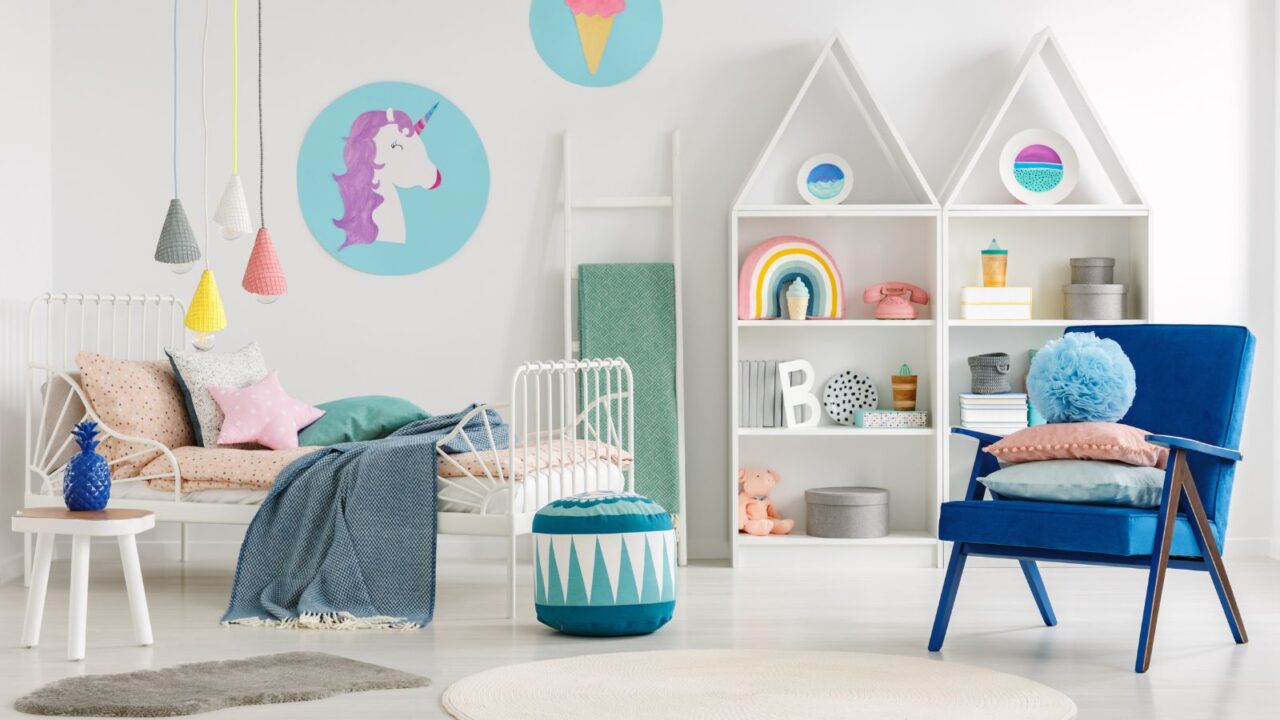
Durable and Stylish Materials
Choose materials that can handle everyday wear and tear without sacrificing style. Washable fabrics, scratch-resistant finishes, and durable flooring are key.
Opt for furniture with rounded edges and non-toxic finishes for safety. Combining durability with design ensures the playroom remains functional and attractive for years to come.
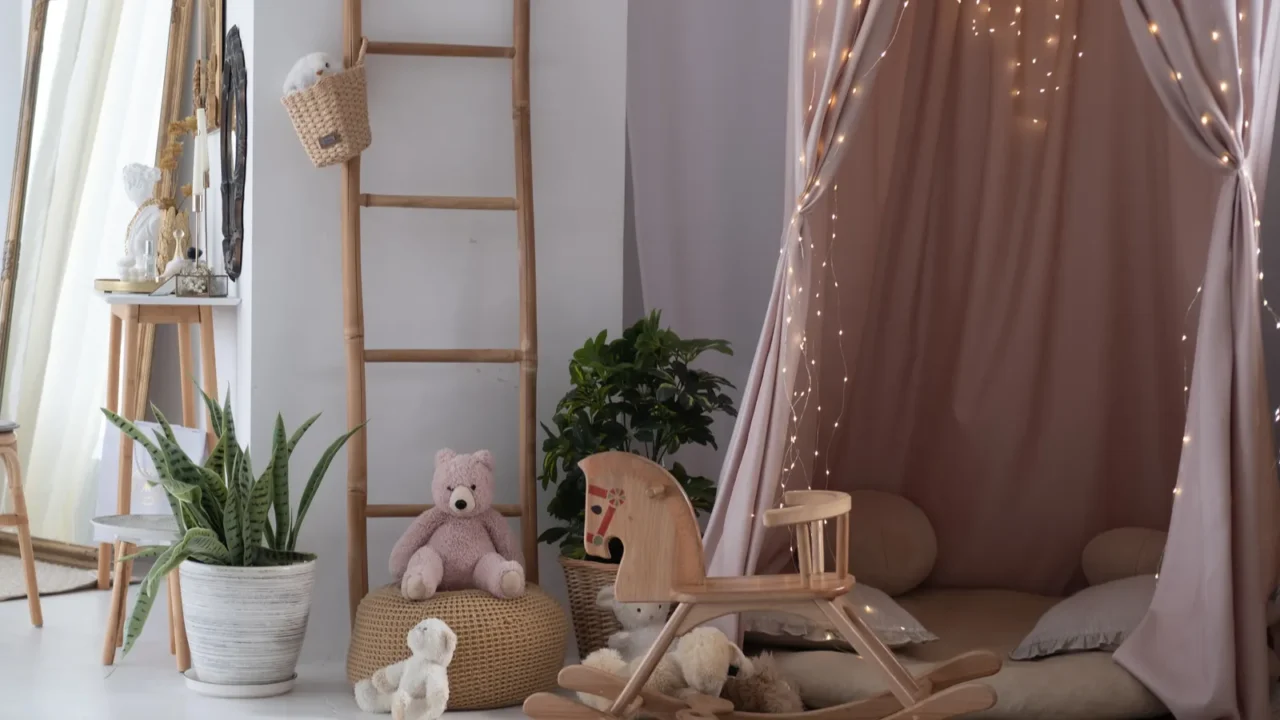
A Cozy Reading Nook
Encourage a love for reading with a dedicated nook. Use a teepee, tent, or canopy to create a magical retreat.
Add soft cushions, blankets, and a small bookshelf. Fairy lights or clip-on lamps can provide soft lighting.
A reading nook becomes a favorite spot for quiet moments, offering a shared space where kids and adults can unwind together.
Check out “How to Turn Tight Corners into a Retro-Style Reading Nook” which works best for both you and your kids.
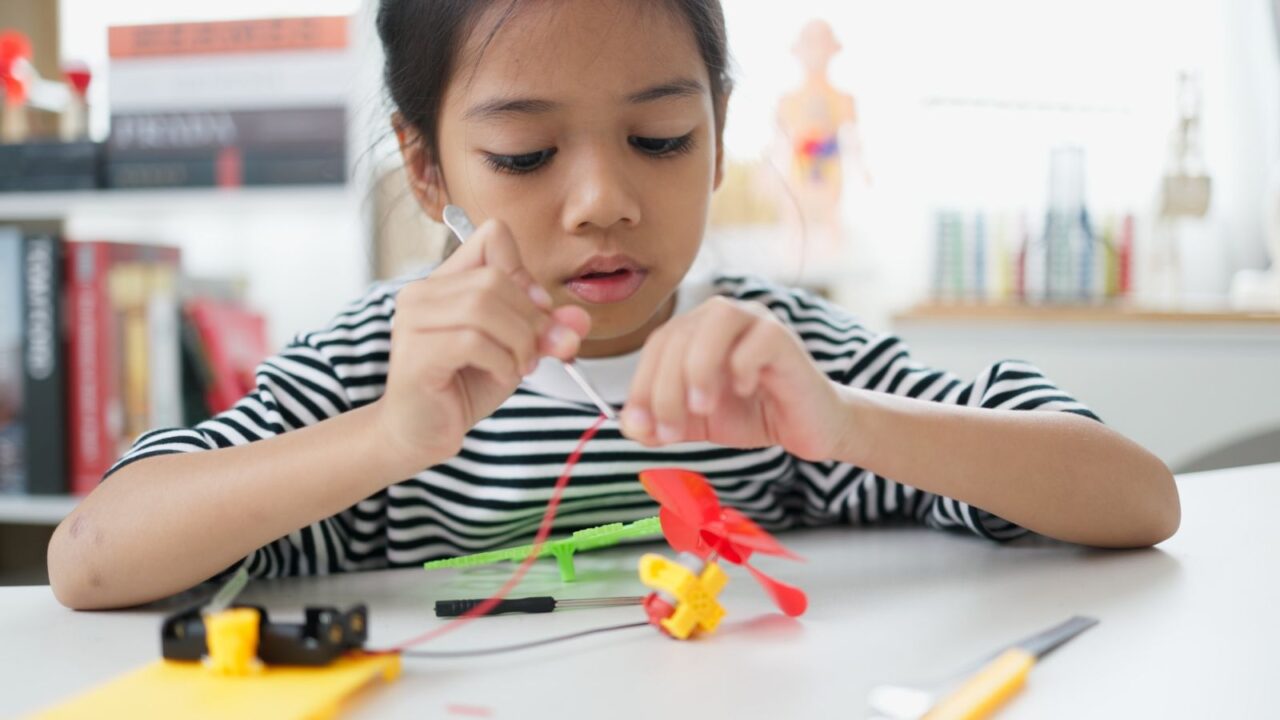
STEM-Inspired Elements
Lastly, Integrating STEM (Science, Technology, Engineering, and Math) elements can change a playroom into a learning hub.
Consider adding building blocks, robotic kits, or science stations where kids can experiment with simple machines, learn coding, or engage in interactive tech activities.
Parents can actively participate in these activities, helping children with projects, guiding experiments, or building together.
For more ideas, check out “STEM-Inspired Playroom Decor” which sparks creativity and learning.